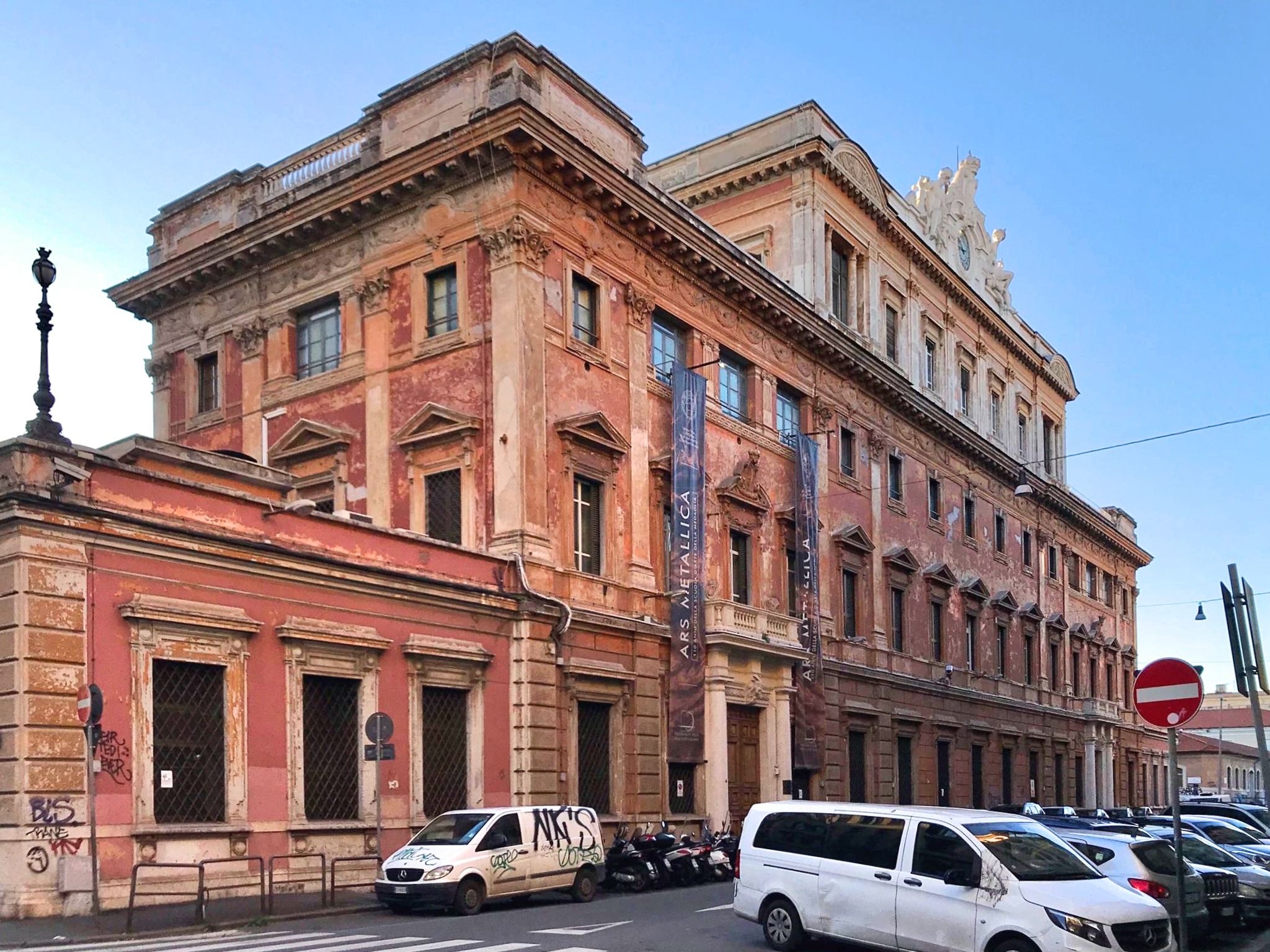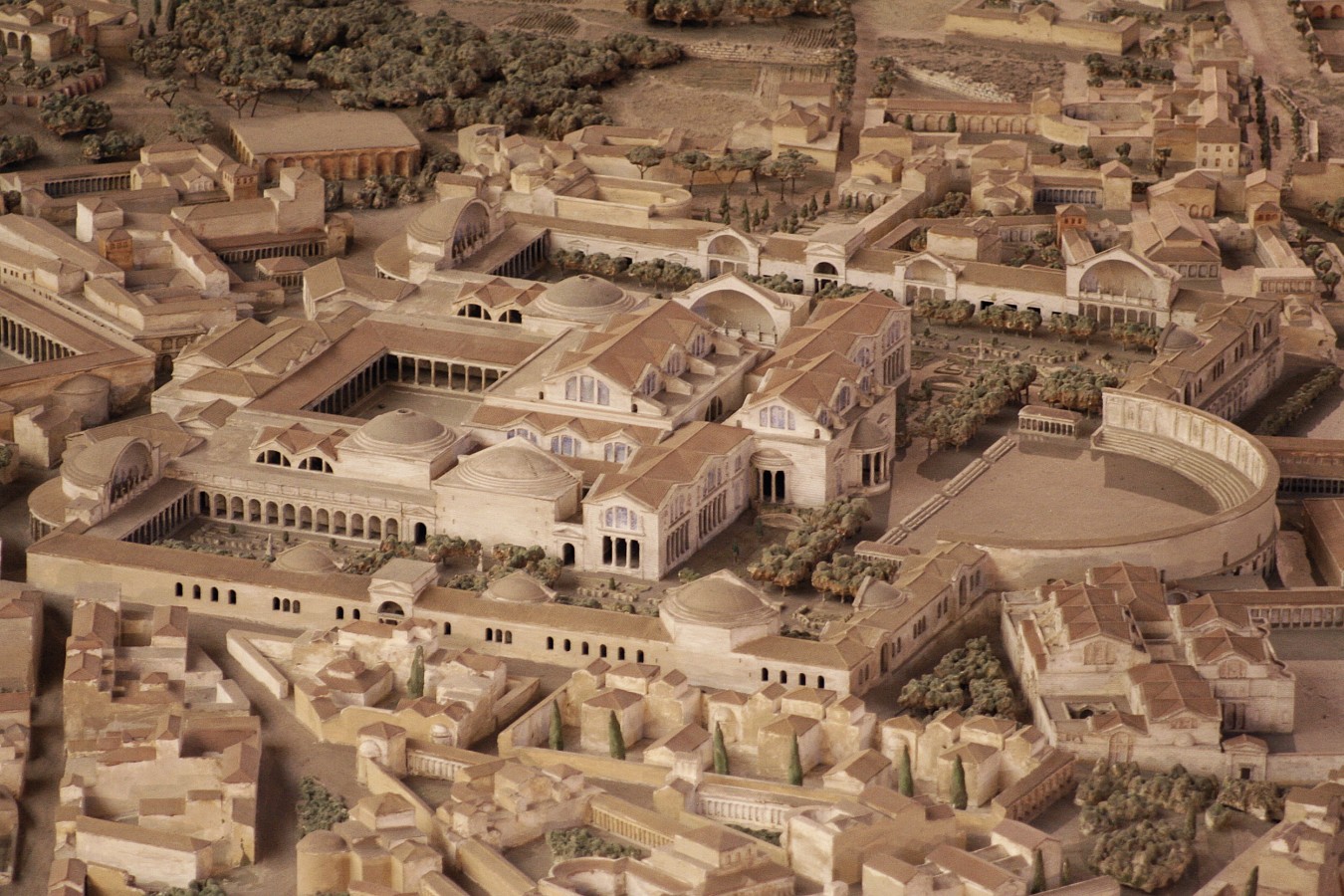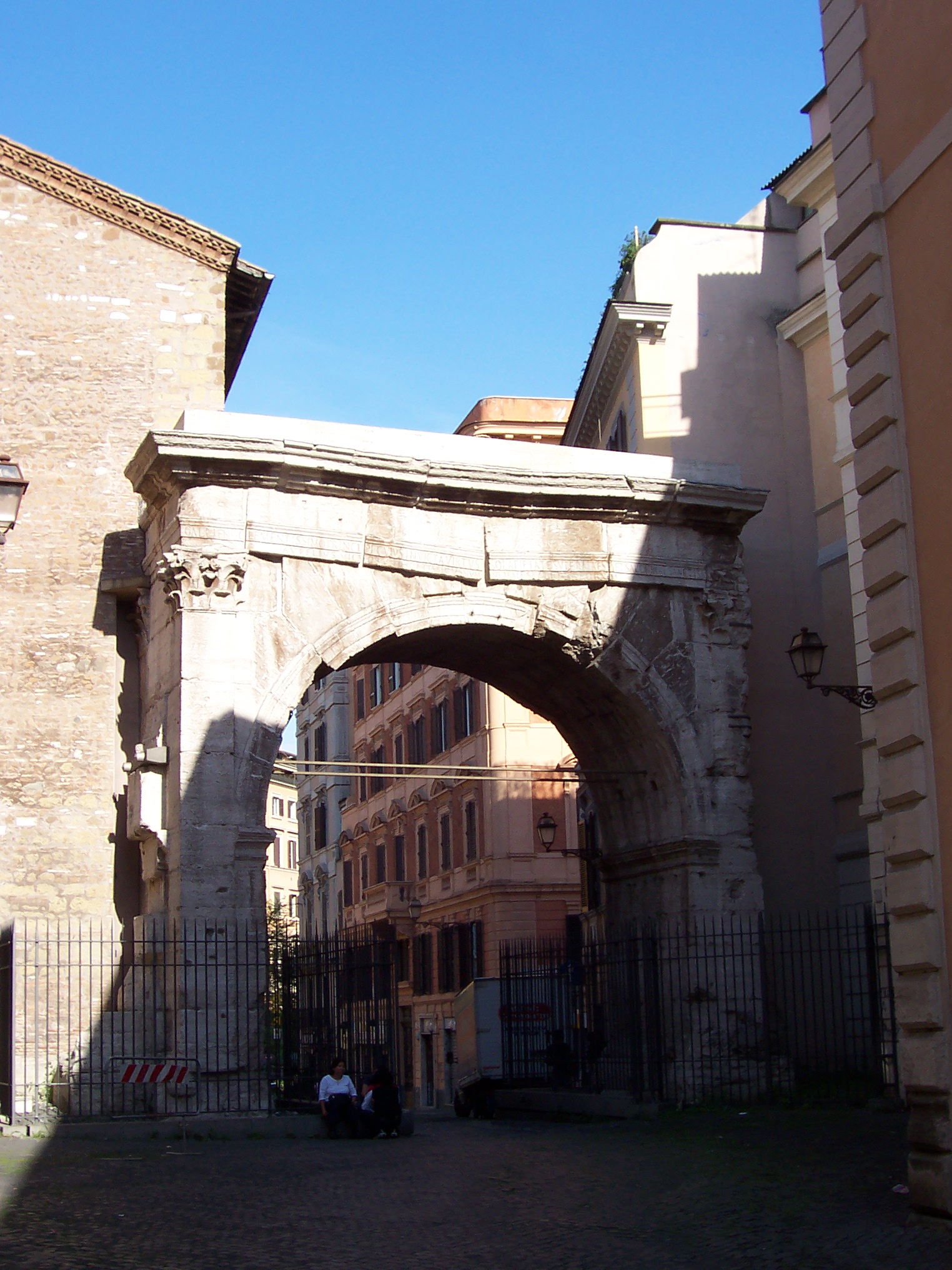|
Esquiline Hill
The Esquiline Hill (; la, Collis Esquilinus; it, Esquilino ) is one of the Seven Hills of Rome. Its southernmost cusp is the ''Oppius'' (Oppian Hill). Etymology The origin of the name ''Esquiline'' is still under much debate. One view is that the hill was named after the abundance of (Italian oaks) growing there. Another view is that, during Rome's infancy, the Capitolium, the Palatinum, and the northern fringes of the Caelian were the most-populated areas of the city, whose inhabitants were considered ("in-towners"); those who inhabited the external regions – Aurelian, Oppius, Cispius, Fagutal – were considered ("suburbanites"). History The Esquiline Hill includes three prominent spurs, which are sometimes called "hills" as well: *Cispian (''Cispius'') – northern spur *Oppian (''Oppius'') – southern spur *Fagutal (''Fagutalis'') – western spur Rising above the valley in which was later built the Colosseum, the Esquiline was a fashionable residential d ... [...More Info...] [...Related Items...] OR: [Wikipedia] [Google] [Baidu] |
Esquilino (rione Of Rome)
Esquilino is the 15th ''rione'' of Rome, identified by the initials R. XV, and is Located within the Municipio I. It is named after the Esquiline Hill, one of the Seven Hills of Rome. Its coat of arms bears two figures: a tree and three green mountains, all on a silver background. It is a very cosmopolitan neighbourhood, with large numbers of immigrants from Asia and North Africa. History Esquilino is part of the historic center of Rome, where urbanization developed in ancient times. Along with ''Palatina'', ''Collina'' and ''Suburana'', the area was one of the four ''regiones'' established by Servius Tullius: until Emperor Augustus adopted a new administrative subdivision of the city, the region included the whole area that is part of the modern ''rione'' Monti. The territory of the modern ''rione'' Esquilino, however, has always been regarded as the frontier of the inner city. Initially at the edge of the Servian Wall, whose ''agger'' was located in the area, during the ... [...More Info...] [...Related Items...] OR: [Wikipedia] [Google] [Baidu] |
Livy
Titus Livius (; 59 BC – AD 17), known in English as Livy ( ), was a Roman historian. He wrote a monumental history of Rome and the Roman people, titled , covering the period from the earliest legends of Rome before the traditional founding in 753 BC through the reign of Augustus in Livy's own lifetime. He was on familiar terms with members of the Julio-Claudian dynasty and a friend of Augustus, whose young grandnephew, the future emperor Claudius, he exhorted to take up the writing of history. Life Livy was born in Patavium in northern Italy, now modern Padua, probably in 59 BC. At the time of his birth, his home city of Patavium was the second wealthiest on the Italian peninsula, and the largest in the province of Cisalpine Gaul (northern Italy). Cisalpine Gaul was merged in Italy proper during his lifetime and its inhabitants were given Roman citizenship by Julius Caesar. In his works, Livy often expressed his deep affection and pride for Patavium, and the city was well ... [...More Info...] [...Related Items...] OR: [Wikipedia] [Google] [Baidu] |
Massimo Family
The princely House of Massimo is one of the great aristocratic families of Rome, renowned for its influence on the politics, the church and the artistic heritage of the city. Legendary origins The Massimo family is sometimes referred to as one of the oldest noble families in Europe. According to the Augustine historian Onofrio Panvinio (1529-1568) in his work "De gente Maxima" of 1556, the family descends in the male line from the ancient Gens Fabia or "Maximi" of republican Rome and from Quintus Fabius Maximus Verrucosus (c. 275 BC – 203 BC), called ''Cunctator'' ("the Delayer"). When asked by Napoleon (with whom he was negotiating the Treaty of Tolentino) whether the family descended from Fabius Maximus, the then Prince Massimo famously replied: «Je ne saurais en effet le prouver, c’est un bruit qui ne court que depuis douze cents ans dans notre famille» ("I can not actually prove it, it's a rumour that only runs for twelve hundred years in our family"). The Massimo f ... [...More Info...] [...Related Items...] OR: [Wikipedia] [Google] [Baidu] |
Myron
Myron of Eleutherae ( grc, Μύρων, ''Myrōn'' ), working c. 480–440 BC, was an Athenian sculptor from the mid-5th century BC. He was born in Eleutherae on the borders of Boeotia and Attica. According to Pliny's '' Natural History'', Ageladas of Argos was his teacher. None of his original sculptures are known to survive, but there are many of what are believed to be later copies in marble, mostly Roman. Reputation Myron worked almost exclusively in bronze and his fame rested principally upon his representations of athletes (including his iconic '' Diskobolos''), in which he made a revolution, according to commentators in Antiquity, by introducing greater boldness of pose and a more perfect rhythm, subordinating the parts to the whole. Pliny's remark that Myron's works were ''numerosior'' than those of Polycleitus and "more diligent" seem to suggest that they were considered more harmonious in proportions (''numeri'') and at the same time more convincing in realism: ''di ... [...More Info...] [...Related Items...] OR: [Wikipedia] [Google] [Baidu] |
Discus Throw
The discus throw (), also known as disc throw, is a track and field event in which an athlete throws a heavy disc—called a discus—in an attempt to mark a farther distance than their competitors. It is an ancient sport, as demonstrated by the fifth-century-BC Myron statue ''Discobolus''. Although not part of the current pentathlon, it was one of the events of the ancient Greek pentathlon, which can be dated back to at least 708 BC, and it is part of the modern decathlon. History The sport of throwing the discus traces back to it being an event in the original Olympic Games of Ancient Greece. The discus as a sport was resurrected in Magdeburg, Germany, by gymnastics teacher Christian Georg Kohlrausch and his students in the 1870s. Organized men's competition was resumed in the late 19th century, and has been a part of the modern Summer Olympic Games since the first modern competition, the 1896 Summer Olympics. Images of discus throwers figured prominently in advertising for ... [...More Info...] [...Related Items...] OR: [Wikipedia] [Google] [Baidu] |
Basilica Of Santa Maria Maggiore
The Basilica of Saint Mary Major ( it, Basilica di Santa Maria Maggiore, ; la, Basilica Sanctae Mariae Maioris), or church of Santa Maria Maggiore, is a Major papal basilica as well as one of the Seven Pilgrim Churches of Rome and the largest Catholic Marian church in Rome, Italy. The basilica enshrines the venerated image of ''Salus Populi Romani'', depicting the Blessed Virgin Mary as the health and protectress of the Roman people, which was granted a Canonical coronation by Pope Gregory XVI on 15 August 1838 accompanied by his Papal bull ''Cælestis Regina''. Pursuant to the Lateran Treaty of 1929 between the Holy See and Italy, the Basilica is within Italian territory and not the territory of the Vatican City State.Lateran Treaty of 1929, Article 15 However, the Holy See fully owns the Basilica, and Italy is legally obligated to recognize its full ownership thereof and to concede to it "the immunity granted by International Law to the headquarters of the diplomatic ag ... [...More Info...] [...Related Items...] OR: [Wikipedia] [Google] [Baidu] |
Horti Liciniani
The Horti Liciniani was a luxurious complex of an ancient Roman villa with large gardens and outdoor rooms originally belonging to the gens Licinia. It was located in Rome on the Esquiline Hill between via Labicana and via Prenestina, close to the Aurelian walls. They bordered the Horti Tauriani to the north and the Horti Pallantiani and Horti Epaphroditiani to the west. History Lucullus started the fashion of building luxurious garden-palaces in the 1st century BC with the construction of his gardens on the Pincian Hill, soon followed by Sallust's gardens between the Quirinal, Viminal and Campus Martius, which were the largest and richest in the Roman world. In the 3rd century AD the total number of gardens (''horti'') occupied about a tenth of Rome and formed a green belt around the centre. The ''horti'' were a place of pleasure, almost a small palace, and offered the rich owner and his court the possibility of living in isolation, away from the hectic life of the city but clo ... [...More Info...] [...Related Items...] OR: [Wikipedia] [Google] [Baidu] |
Baths Of Trajan
The Baths of Trajan ( it, Terme di Traiano) were a massive ''thermae'', a bathing and leisure complex, built in ancient Rome starting from 104 AD and dedicated during the '' kalendae'' of July in 109. Commissioned by Emperor Trajan, the complex of baths occupied space on the southern side of the Oppian Hill on the outskirts of what was then the main developed area of the city, although still inside the boundary of the Servian Wall. The architect of the complex is said to be Apollodorus of Damascus. The baths were being utilized mainly as a recreational and social center by Roman citizens, both men and women, as late as the early 5th century. The complex seems to have been deserted soon afterwards as a cemetery dated to the 5th century (which remained in use until the 7th century) has been found in front of the northeastern exedra. The baths were thus no longer in use at the time of the siege of Rome by the Ostrogoths in 537; with the destruction of the Roman aqueducts, all ''thermae ... [...More Info...] [...Related Items...] OR: [Wikipedia] [Google] [Baidu] |
Nero
Nero Claudius Caesar Augustus Germanicus ( ; born Lucius Domitius Ahenobarbus; 15 December AD 37 – 9 June AD 68), was the fifth Roman emperor and final emperor of the Julio-Claudian dynasty, reigning from AD 54 until his death in AD 68. He was Adoption in Ancient Rome, adopted by the Roman emperor Claudius at the age of 13 and succeeded him on the throne. Nero was popular with the members of his Praetorian Guard and lower-class commoners in Rome and its provinces, but he was deeply resented by the Roman aristocracy. Most contemporary sources describe him as tyrannical, self-indulgent, and debauched. After being declared a public enemy by the Roman Senate, he committed suicide at age 30. Nero was born at Antium in AD 37, the son of Gnaeus Domitius Ahenobarbus (father of Nero), Gnaeus Domitius Ahenobarbus and Agrippina the Younger, a great-granddaughter of the emperor Augustus. When Nero was two years old, his father died. His mother married the e ... [...More Info...] [...Related Items...] OR: [Wikipedia] [Google] [Baidu] |
Esquiline Necropolis
The Esquiline Necropolis (Italian - ''Necropoli dell'Esquilino'') was a prehistoric necropolis on the Esquiline Hill in Rome, in use until the end of the 1st century AD. It came into use when the Forum necropolis fell into disuse in the mid 8th century BC (other than for child burials, which continued there until the end of the 7th century BC), and testifies to Rome's expansion towards the Velian Hill. Its burials have richer grave goods and are better supplied with weapons, typical of a now aristocratic warrior-class, as already existed in other areas along the Tyrrhenian seaboard such as Etruria and Campania. As regards the protohistoric Protohistory is a period between prehistory and history during which a culture or civilization has not yet developed writing, but other cultures have already noted the existence of those pre-literate groups in their own writings. For example, ... period, the burials are of the advanced "second phase" and, more typically, the "third ... [...More Info...] [...Related Items...] OR: [Wikipedia] [Google] [Baidu] |
Servian Wall
The Servian Wall ( la, Murus Servii Tullii; it, Mura Serviane) was an ancient Roman defensive barrier constructed around the city of Rome in the early 4th century BC. The wall was built of volcanic tuff and was up to in height in places, wide at its base, long, and is believed to have had 16 main gates, of which only one or two have survived, and enclosed a total area of . In the 3rd century AD it was superseded by the construction of the larger Aurelian Walls as the city of Rome grew beyond the boundary of the Servian Wall. History The wall is named after the sixth Roman King, Servius Tullius. The literary tradition stating that there was some type of defensive wall or earthen works that encircled the city of Rome dating to the 6th century BC has been found to be false. The main extent of the Servian Wall was built in the early 4th century, during what is known as the Roman Republic. Construction The Servian Wall was originally built from large blocks of Cappellaccio tuff ... [...More Info...] [...Related Items...] OR: [Wikipedia] [Google] [Baidu] |
Gardens Of Maecenas
The Gardens of Maecenas, or ''Horti Maecenatis'', constituted the luxurious ancient Roman estate of Gaius Maecenas, an Augustan-era imperial advisor and patron of the arts. The property was among the first in Italy to emulate the style of Persian gardens. The walled villa, buildings, and gardens were located on the Esquiline Hill, atop the agger of the Servian Wall and its adjoining necropolis, as well as near the Horti Lamiani. History Lucullus started the fashion of building luxurious garden-palaces in the 1st century BC with the construction of his gardens on the Pincian Hill, soon followed by Sallust's gardens between the Quirinal, Viminal and Campus Martius, which were the largest and richest in the Roman world. In the 3rd century AD the total number of gardens (''horti'') occupied about a tenth of Rome and formed a green belt around the centre. The ''horti'' were a place of pleasure, almost a small palace, and offered the rich owner and his court the possibility of liv ... [...More Info...] [...Related Items...] OR: [Wikipedia] [Google] [Baidu] |










